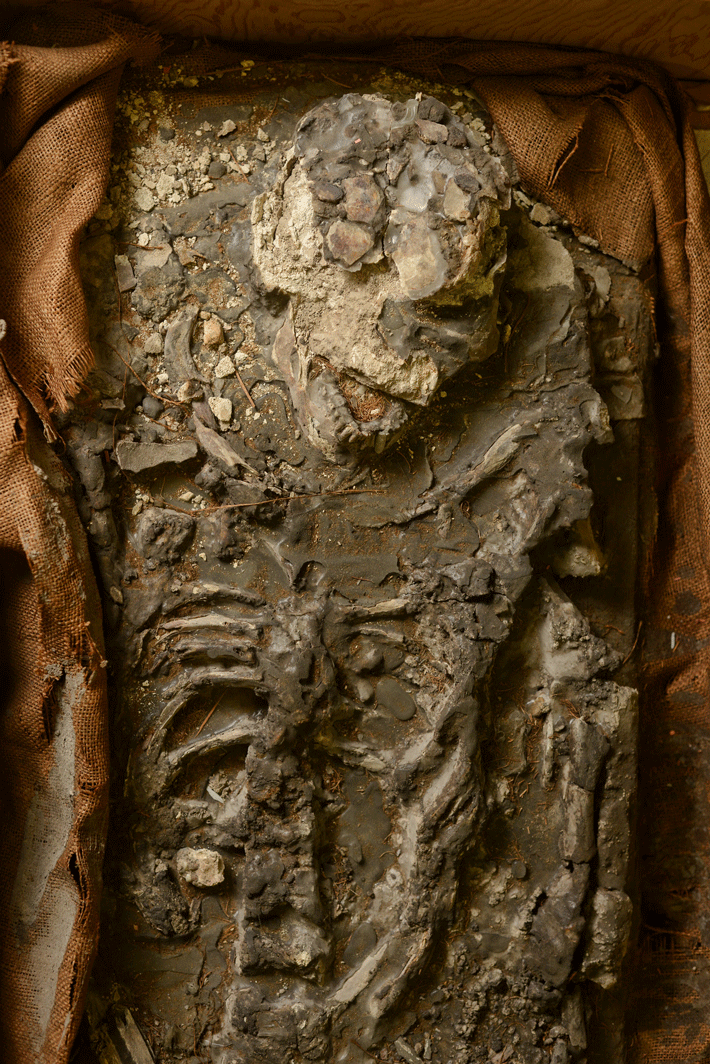Storeroom Surprise
November/December 2014
 As they digitized old records over the last two years, researchers at the University of Pennsylvania Museum of Archaeology and Anthropology unexpectedly solved one of the museum’s great mysteries—the origin of a 6,500-year-old skeleton lying in one of their storerooms.
As they digitized old records over the last two years, researchers at the University of Pennsylvania Museum of Archaeology and Anthropology unexpectedly solved one of the museum’s great mysteries—the origin of a 6,500-year-old skeleton lying in one of their storerooms.
Between 1922 and 1934, Sir Leonard Woolley excavated the Sumerian site of Ur in southern Iraq, including dozens of burials. Much of the material uncovered was divided between the Penn Museum and the British Museum, and some time around 1930, the Penn Museum received a box containing a skeleton from the Ur excavations. Over the decades, however, all documentation relating to the container was lost, and the remains lay anonymously in museum storage for 85 years.
As part of the digitizing project, researchers were led to Woolley’s notebooks, which they used to connect their unidentified skeleton with a grave excavated by Woolley in 1930. It was an easy match, as the archaeologist had lifted the bones and the surrounding deposit as a whole, and then coated them in wax. According to Penn curator Janet Monge, the remains belonged to a muscular male in his 50s who stood about five feet nine inches tall. He had been buried with his legs extended, his arms lying at his sides, and his hands resting on his abdomen. Woolley recorded that the man was found in one of the earliest levels of Ur, in a layer of silt deposited by a great flood, leading some of the researchers to nickname the remains “Noah.” A complete skeleton more than six millennia old is extremely rare, and the museum is hoping that new technologies will provide valuable information about a little-known culture, as well as indications of the man’s diet, ancestral origins, and cause of death.